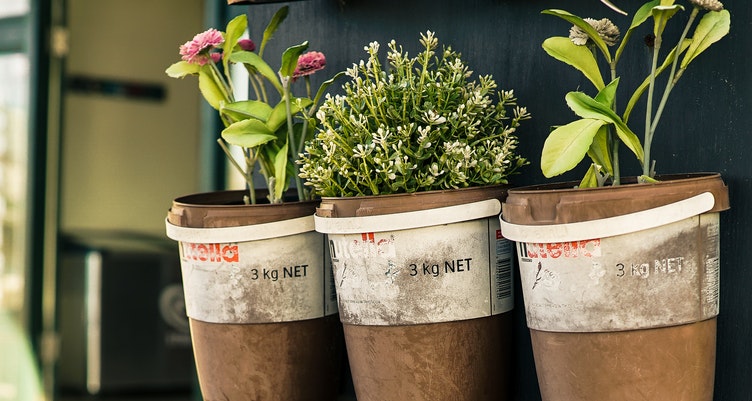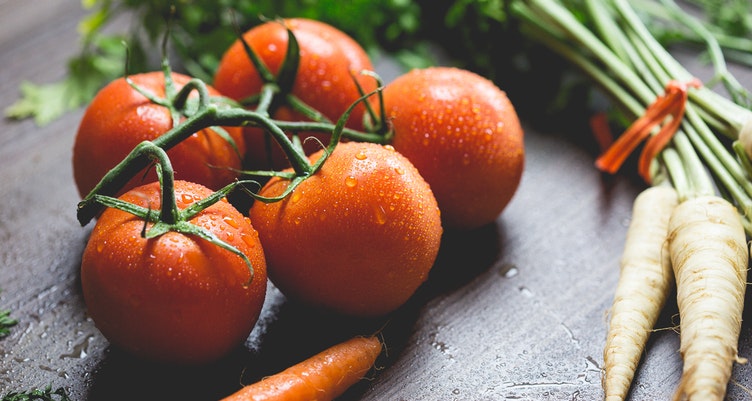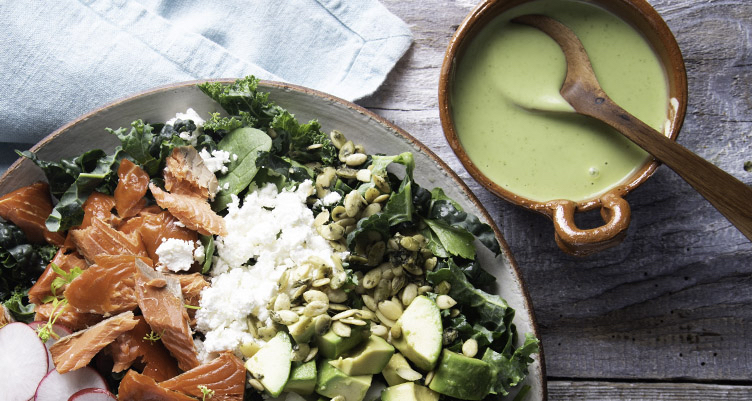How to Grow a Keto Container Garden at Home

- You can grow fresh, keto-friendly vegetables, fruits and herbs at home, even if you don’t have any gardening experience.
- Get started with a container garden — all you need is a pot just big enough to grow plants that can still thrive in smaller spaces.
- With an appropriately-sized container, enough sun and the right amount of water, you can grow vegetables, fruits and herbs that will thrive.
One of the most efficient ways to keep your kitchen full of keto-friendly veggies, fruits and herbs is to grow them yourself. If you lack the space or experience to farm a garden plot, you can still garden with less risk and more chance for success — just grow keto plants in a container.
Planting in a container is a great way to dip your toe into the world of gardening. It allows you to grow fruits and vegetables in a small space that fits right on your deck or window ledge. If you’re eating keto (or any lower-carb diet), you want an abundance of low-carb vegetables, fruits and delicious herbs. In a container, you can grow a variety of these plants suited for container living.
What can you grow in a keto container garden?

While plants like broccoli, cauliflower and Brussels sprouts are great to eat on a keto diet, these aren’t easy to grow, even for expert gardeners. Lucky for us, there are other keto vegetables that are happy to thrive in a container.
Below is a list of plants that are high in nutrients and low in carbohydrates — perfect for your keto diet. This isn’t a definitive list, but it’s a great place to start. These plants are not only low-carb, they’re hardy, accessible and easy to grow in a small space with the right circumstances.
Vegetables

These vegetables are known for growing well in tight spaces. Ask your nursery plant specialist to point you to the species of each plant that is best suited to a container.
- Lettuce: With decent sunlight and consistent watering, you’ll be surprised how easy it is to grow lettuce. As the heads grow, cut the leaves off the outside to add to your salad bowl. You’ll find lettuce choices in a variety of sizes and colors.
- Spinach: Spinach is a vitamin-packed keto veggie. The plant grows a deep taproot — about a foot long. Make sure your container is deep enough to provide space for the taproot and several inches more for smaller roots to get plenty of moisture and access to nutrient-rich soil.
- Mini carrots: Choose a “mini” variety that will be happy to grow in a container. Make sure to choose a deep container to allow the sweet, tender carrot roots to grow. Keep sowing and planting seeds as you harvest them for a continual supply.
- Radishes: Much like carrots, these need a deep container. Harvest when you’re ready for a snack, then replant so you have more coming up.
- Chard: You’ve got to have patience, but growing chard is worth it. Chard has a long harvest period, but while you’re waiting, it displays veins in beautiful colors like red, yellow and white. Cut leaves often when they’re small and tender for a tasty, healthful side-dish.
- Other vegetables to try: Cucumbers, kohlrabi, asparagus and beets
Fruits

Lucky for us, we can eat low-fructose berries on the keto and Bulletproof diets. The fruits below are listed by their carbohydrate count, ranging from 1.5 grams to 2 grams of sugar per ½ cup. A gardening expert at your local nursery will be able to help you choose varieties bred specifically to thrive in a container:
- Tomatoes: While you might think tomatoes aren’t a fruit, their seeds qualify them to be on this list. To grow delicious, flavorful tomatoes, make sure you have enough water, soil and sun in your container. Plant marigolds alongside your tomato plants to repel pests.
- Raspberries and blackberries: The roots of these berries tend to grow out rather than down. They will be happy in a shallower container, as long as it’s deep enough for the plants to develop canes. Choose a 5 gallon container at least 6 inches deep.
- Strawberries: Strawberries are one of the easiest plants to grow in a container. Plant on mounds and put straw or newspaper around the plants so the berries will not rest on the ground and rot before they’re ripe. Ask your nursery expert for an “everbearing” variety that will keep blooming and producing strawberries all summer long.
Herbs

Having your own fresh herb garden is a chef’s dream. These plants mature quickly and are easy to grow anywhere from a deck container to a window sill. Because you can’t successfully grow water-loving herbs in the same space as herbs that enjoy well-drained soil, we’ve grouped these herbs by their moisture needs:
- Likes drier soil: Oregano, tarragon, sage, rosemary, thyme
- Likes wetter soil: Basil, cilantro, parsley, mint, chives
How do I start my container garden?

If you don’t have gardening experience, make it easy on yourself. Choose drought-resistant plants in case you forget to water. If you live somewhere with extreme temperatures, choose weather-hardy plants. If planting multiple plants in a container, make sure you choose plants that have the same environmental and water needs.
The three most important things that determine the health of your container plants are sunlight, container size and water.
- Sun: Different plants have different sunlight needs. Generally, you want to put your container in a place that gets morning sun facing south. Make sure it doesn’t get too much hot afternoon sun or your container will dry out.
- Size: When you purchase your plants, ask the nursery plant specialist how much space your plant needs in the container. Consider that the soil will hold moisture and nutrients for your plant’s roots. The bigger the better — more space means your plants have more area to thrive.
- Water: To be sure you’re watering completely, pour until water comes out the drain holes in the bottom. Depending on your environment, choose a clay pot container if your plants need to completely dry out between waterings. Choose a lacquered pot if plants need to retain moisture.
Keto recipes for container gardening

Once your plants have started to grow, have some recipes ready to use up all that delicious produce. Here are some new and tasty ways to cook with your garden bounty:
- Keto Chopped Salad With Quick Creamy Dressing: With your new container garden, you’ll only have to buy a few more veggies to prepare a beautiful salad with this delicious recipe. To make this salad, harvest lettuce, radishes, cilantro and parsley.
- Rainbow Mason Jar Salad: You’ll want radishes and arugula to make this salad. Layers of vibrant veggies make a beautiful, tasty meal.
- Keto Snack Plate With Rocket and Basil Pesto: Here’s a healthful between-meal snack. The home-grown arugula (rocket) and basil pesto makes a zesty dipping sauce.
- Gluten-Free Tabbouleh: The magic ingredient in tabbouleh is definitely parsley. Parsley is one of the easiest herbs to grow. Trim a cut of parsley off the top of the plant and it will regrow by the time you’re ready to make this recipe again.
- Keto Raspberry Tarragon Salad Dressing: Combine your herbs and berries in this recipe for a tangy, sweet and savory dressing that is sure to impress.
- The Perfect Zucchini Chocolate Cake: Zucchini is another fun plant to grow in a container: just be ready to give them a container to themselves. Once your plant gets going, you’ll be up to your ears in zucchini, so unique recipes like this will come in handy.
Sign up for early access to sales, product launches, the latest Bulletproof news and more!



